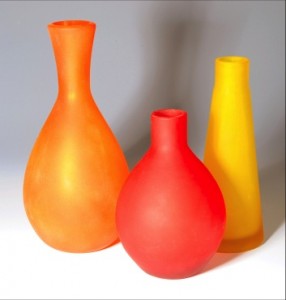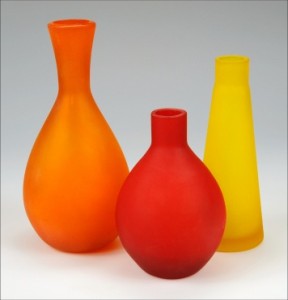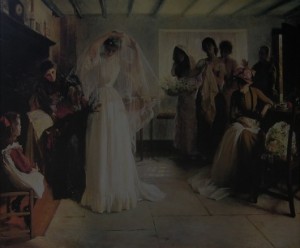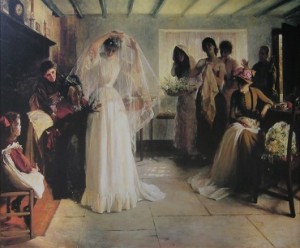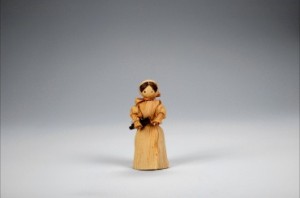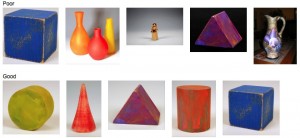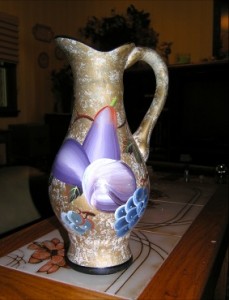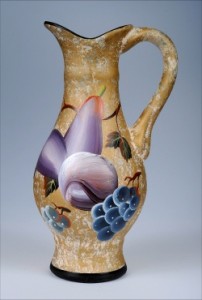Photographing Your Artwork: Some Tips
Images courtesy of Larry Berman
Proper equipment is essential:
- If photographing your own work, use a 3-megapixel camera or better.
- Most photography studios offer services to digitally scan slides.
If you use models to display your work:
- Be aware that models can easily take away from your work if not photographed correctly.
- Remember that your work is the focus, not the model.
Lighting:
- Lighting is an important factor when photographing your work.
- Be sure that your camera is set and white-balanced for your lighting conditions.
- Small shifts of light can dramatically bring out the details in your work.
- Play with different angles.
- Avoid hot spots if at all possible.
Exposure:
- Bracket your photographs and take multiple exposures.
- Depending on your lighting, various exposures can give different effects to your work.
- Make sure that your blacks and whites still retain detail.
Focus/Clarity:
- Your images should be clear and in focus. This is especially critical with artwork that has fine detail.
- The more textures and nuances the jurors can see, the more your craftsmanship will be appreciated and noticed.
- Macro photography can significantly enhance jewelry images.
Perspective: especially applies to jewelry, craft, glass, 3D, fiber
- Different angles can give off different moods and feelings for the artwork.
- Experiment with various angles.
- Take many photos so you have a variety to chose from.
Perspective examples:
Poor

Good
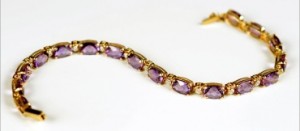
Size:
- Use up the maximum amount of image space available in the 1920 x 1920 pixel limit.
- Crop the image so there is not any unnecessary negative space in the image.
Size examples:
Consistency: applies to all media categories
- Make sure that all of your images have a consistent feel and look.
- A consistent theme, lighting, background, subject, etc., will make your submission appear professional.
Backgrounds:
- Steer away from distracting backgrounds.
- If using a background, gradients and neutral colors work best.
- People, pets, banners, etc., can take away from your work.
- Each image is your chance to glorify your work. Remove any distracting elements.
Backgrounds examples:

